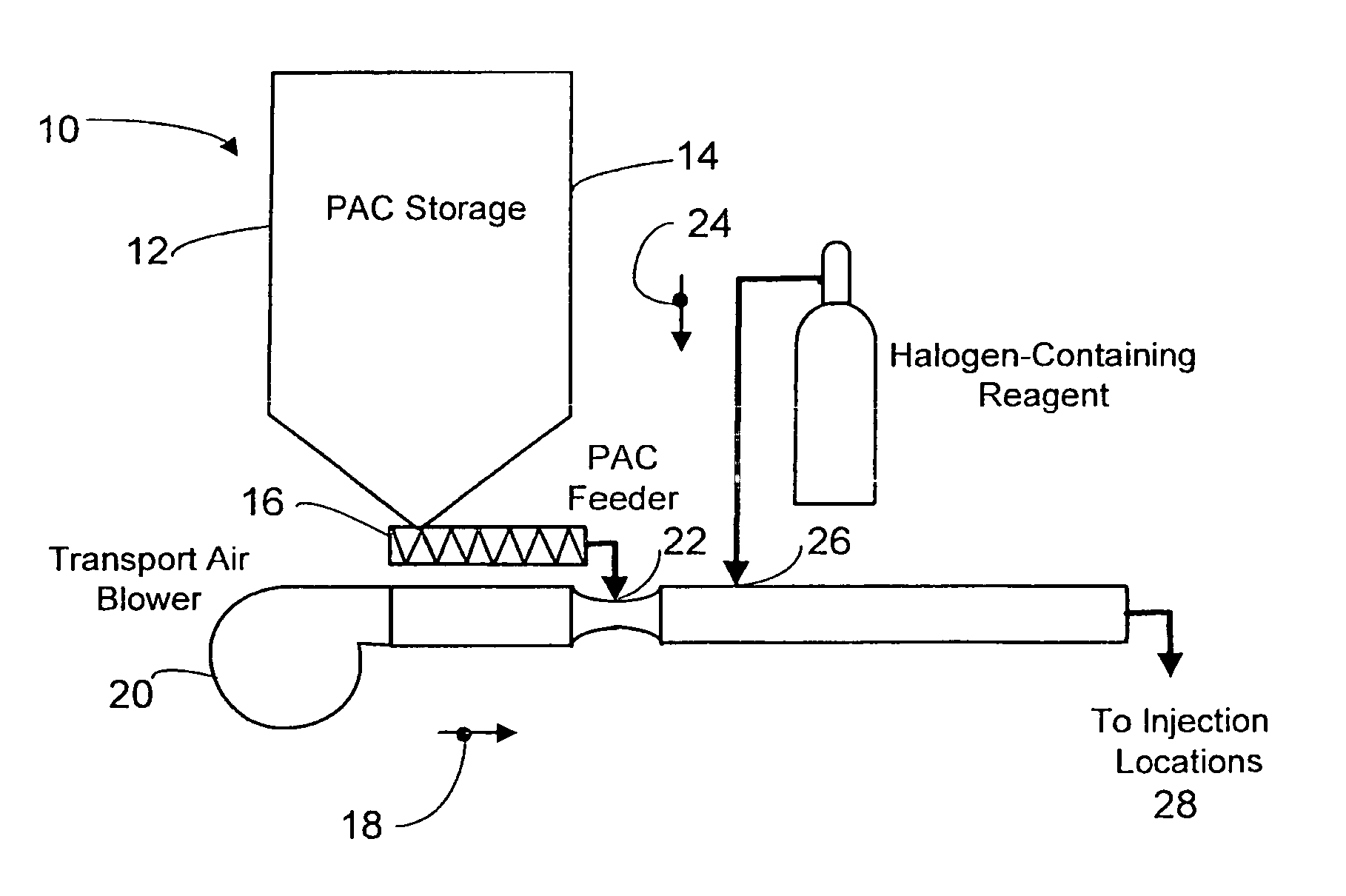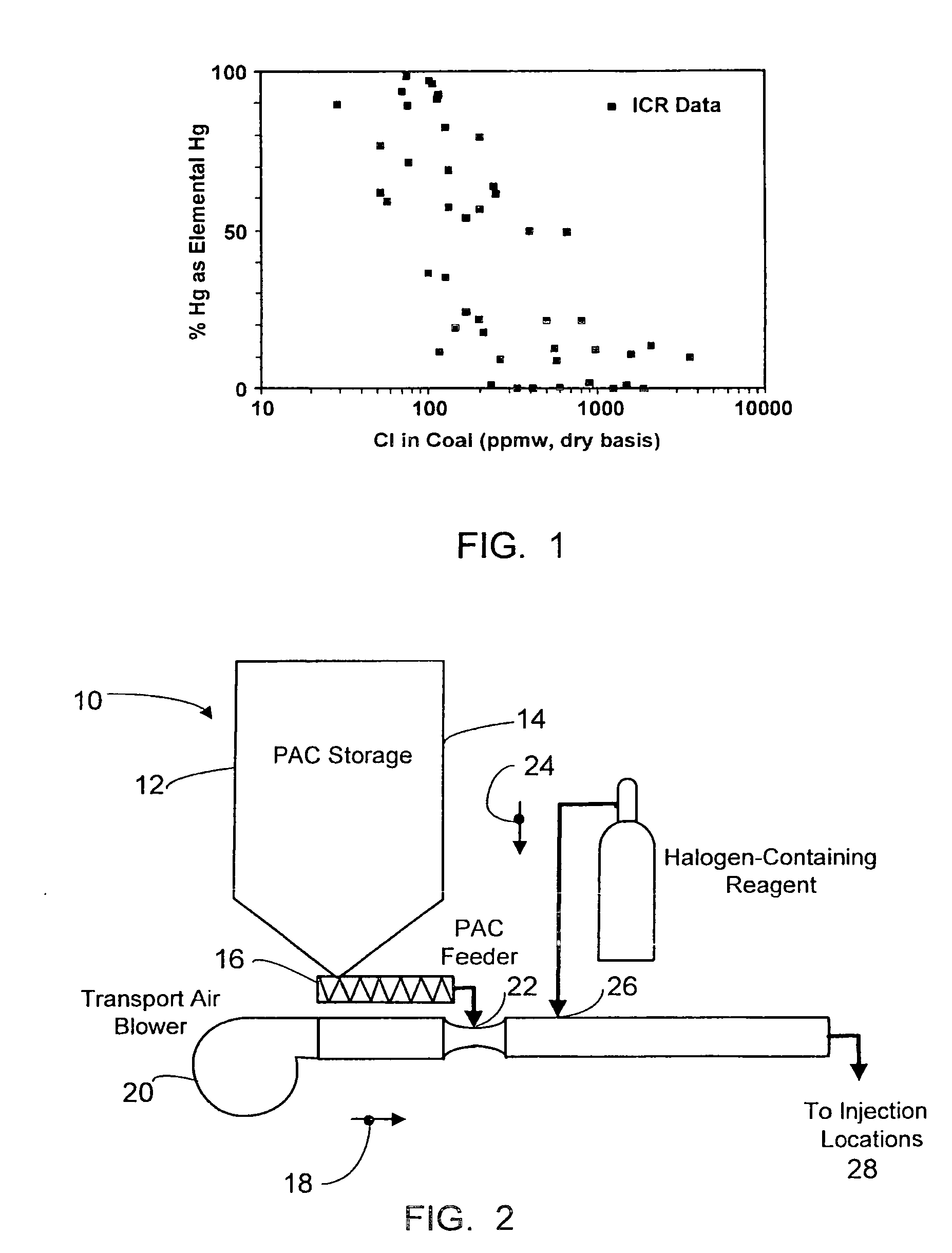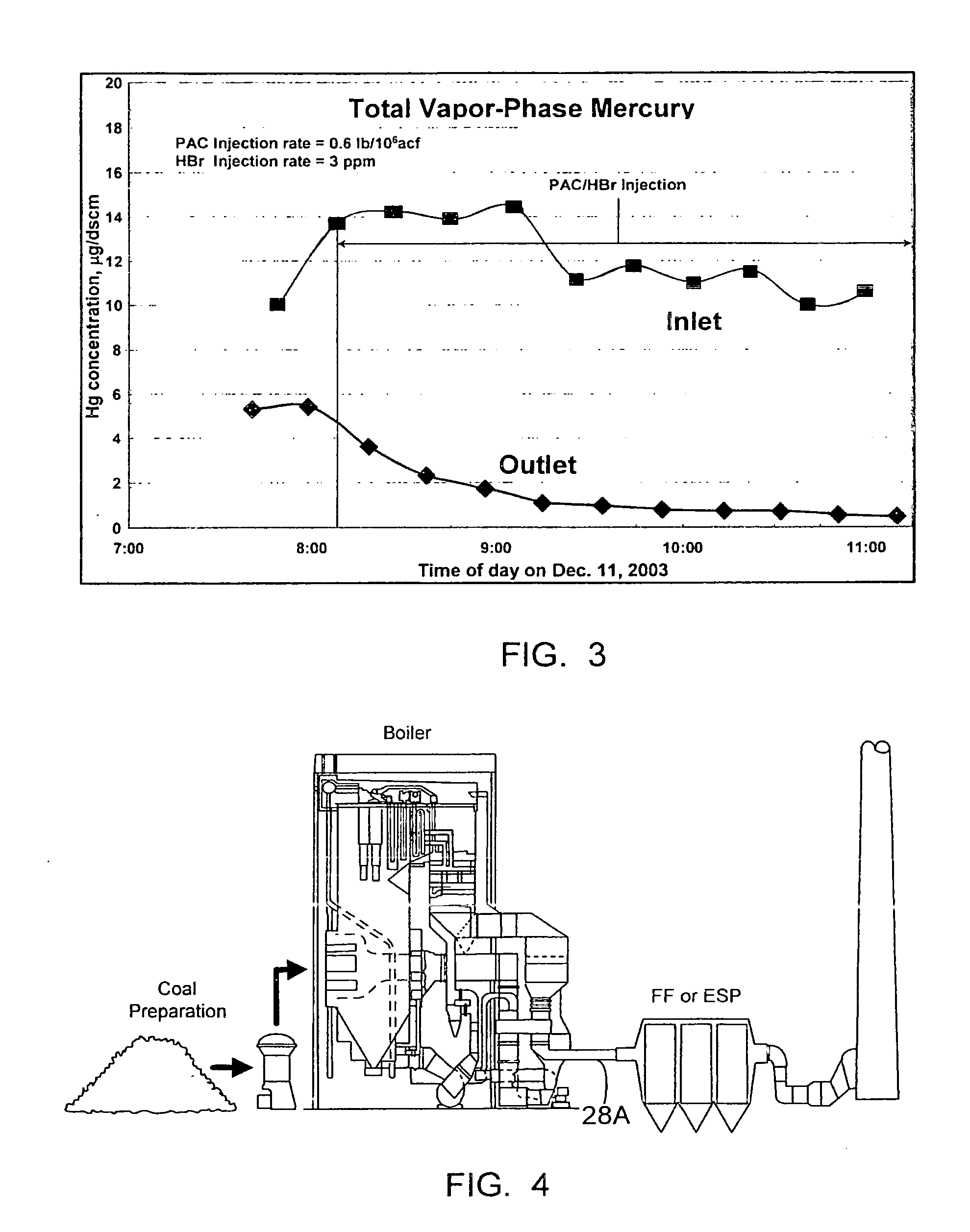Dynamic halogenation of sorbents for the removal of mercury from flue gases
a technology of sorbents and mercury, which is applied in the direction of separation processes, dispersed particle separation, chemistry apparatus and processes, etc., can solve the problems of difficult capture in conventional wet and dry scrubbers, the economics of high injection rates can be prohibitive when applied to coal-fired utility plants
- Summary
- Abstract
- Description
- Claims
- Application Information
AI Technical Summary
Benefits of technology
Problems solved by technology
Method used
Image
Examples
Embodiment Construction
[0019] Referring to the drawings generally, wherein like numerals designate the same or functionally similar elements throughout the several drawings, and to FIG. 2 in particular, there is illustrated a preferred embodiment of the present invention, the Dynamic Halogenation process for treating sorbents for the removal of mercury from flue gases. As shown in FIG. 2, a system and method according to the present invention comprises a conventional powdered activated carbon (PAC) injection system 10 including a sorbent storage tank 12 containing a supply of sorbent 14, a means for metering 16 the sorbent 14 into a sorbent transport air stream 18, a sorbent transport air blower 20 for supplying the air 18 used to convey the sorbent 14 to the injection locations in the flue gas flue(s), and a pick-up point 22 where the sorbent 14 is dispersed into the transport air stream 18. It should be recognized that this is only one embodiment of a pneumatic transport conveying system, and many other...
PUM
| Property | Measurement | Unit |
|---|---|---|
| residence time | aaaaa | aaaaa |
| temperature | aaaaa | aaaaa |
| insoluble | aaaaa | aaaaa |
Abstract
Description
Claims
Application Information
 Login to View More
Login to View More - R&D
- Intellectual Property
- Life Sciences
- Materials
- Tech Scout
- Unparalleled Data Quality
- Higher Quality Content
- 60% Fewer Hallucinations
Browse by: Latest US Patents, China's latest patents, Technical Efficacy Thesaurus, Application Domain, Technology Topic, Popular Technical Reports.
© 2025 PatSnap. All rights reserved.Legal|Privacy policy|Modern Slavery Act Transparency Statement|Sitemap|About US| Contact US: help@patsnap.com



